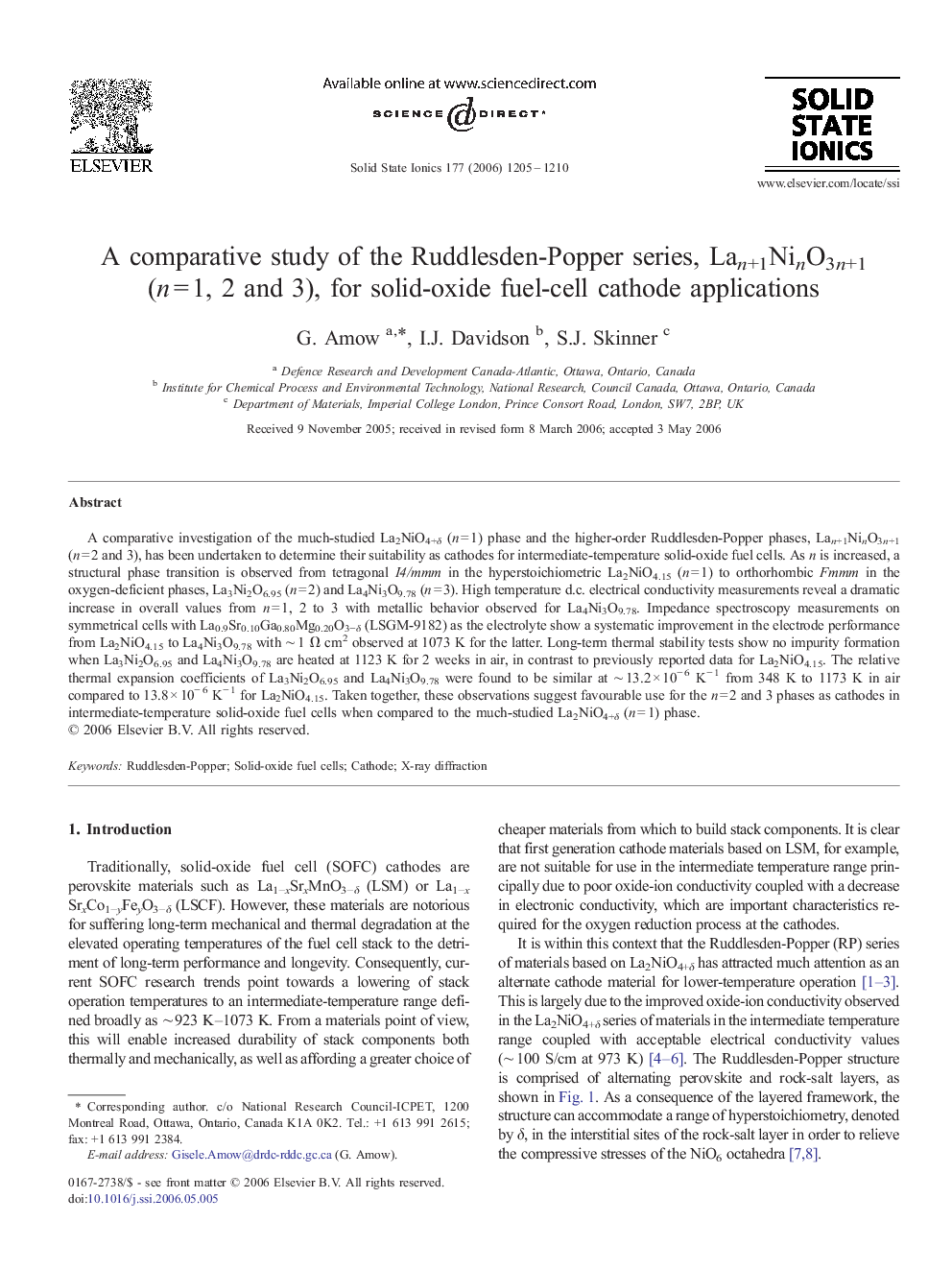| Article ID | Journal | Published Year | Pages | File Type |
|---|---|---|---|---|
| 1298954 | Solid State Ionics | 2006 | 6 Pages |
A comparative investigation of the much-studied La2NiO4+δ (n = 1) phase and the higher-order Ruddlesden-Popper phases, Lan+1NinO3n+1 (n = 2 and 3), has been undertaken to determine their suitability as cathodes for intermediate-temperature solid-oxide fuel cells. As n is increased, a structural phase transition is observed from tetragonal I4/mmm in the hyperstoichiometric La2NiO4.15 (n = 1) to orthorhombic Fmmm in the oxygen-deficient phases, La3Ni2O6.95 (n = 2) and La4Ni3O9.78 (n = 3). High temperature d.c. electrical conductivity measurements reveal a dramatic increase in overall values from n = 1, 2 to 3 with metallic behavior observed for La4Ni3O9.78. Impedance spectroscopy measurements on symmetrical cells with La0.9Sr0.10Ga0.80Mg0.20O3−δ (LSGM-9182) as the electrolyte show a systematic improvement in the electrode performance from La2NiO4.15 to La4Ni3O9.78 with ∼ 1 Ω cm2 observed at 1073 K for the latter. Long-term thermal stability tests show no impurity formation when La3Ni2O6.95 and La4Ni3O9.78 are heated at 1123 K for 2 weeks in air, in contrast to previously reported data for La2NiO4.15. The relative thermal expansion coefficients of La3Ni2O6.95 and La4Ni3O9.78 were found to be similar at ∼ 13.2 × 10− 6 K− 1 from 348 K to 1173 K in air compared to 13.8 × 10− 6 K− 1 for La2NiO4.15. Taken together, these observations suggest favourable use for the n = 2 and 3 phases as cathodes in intermediate-temperature solid-oxide fuel cells when compared to the much-studied La2NiO4+δ (n = 1) phase.
